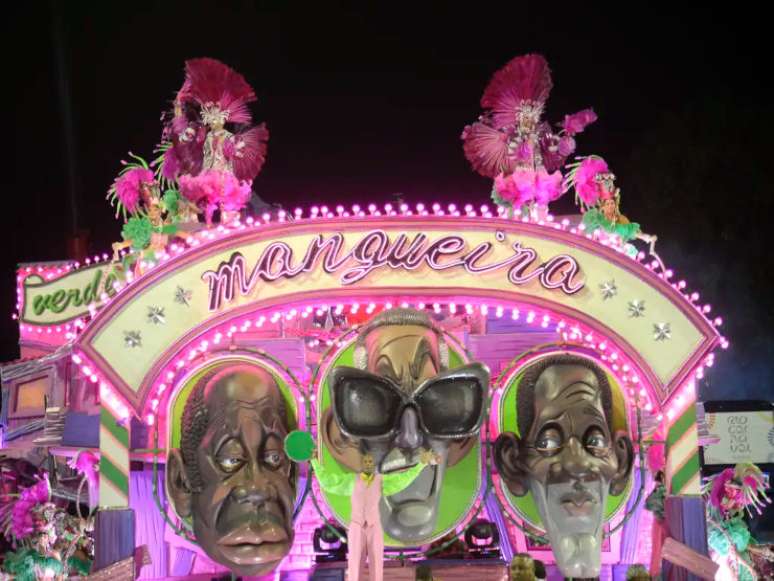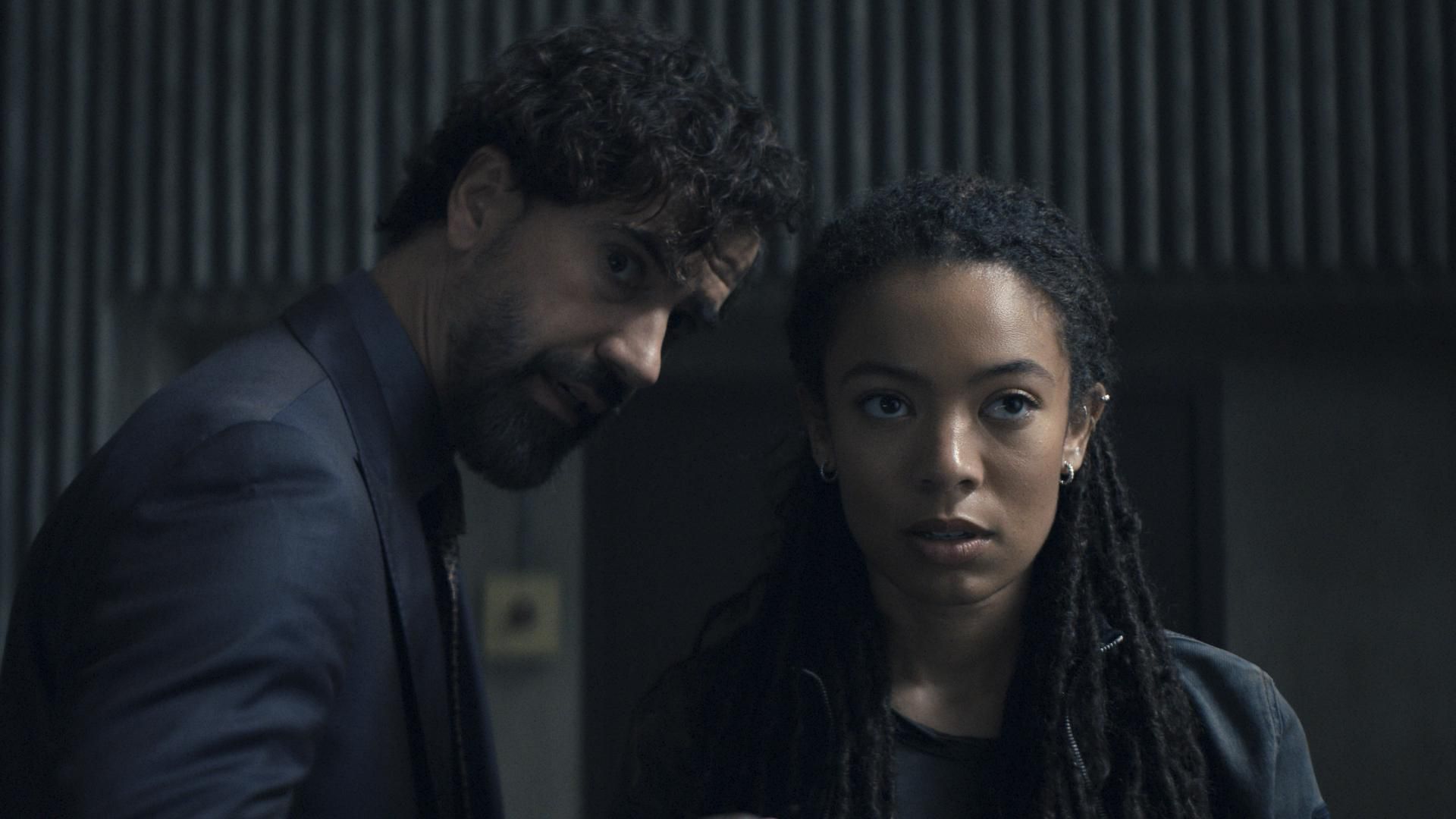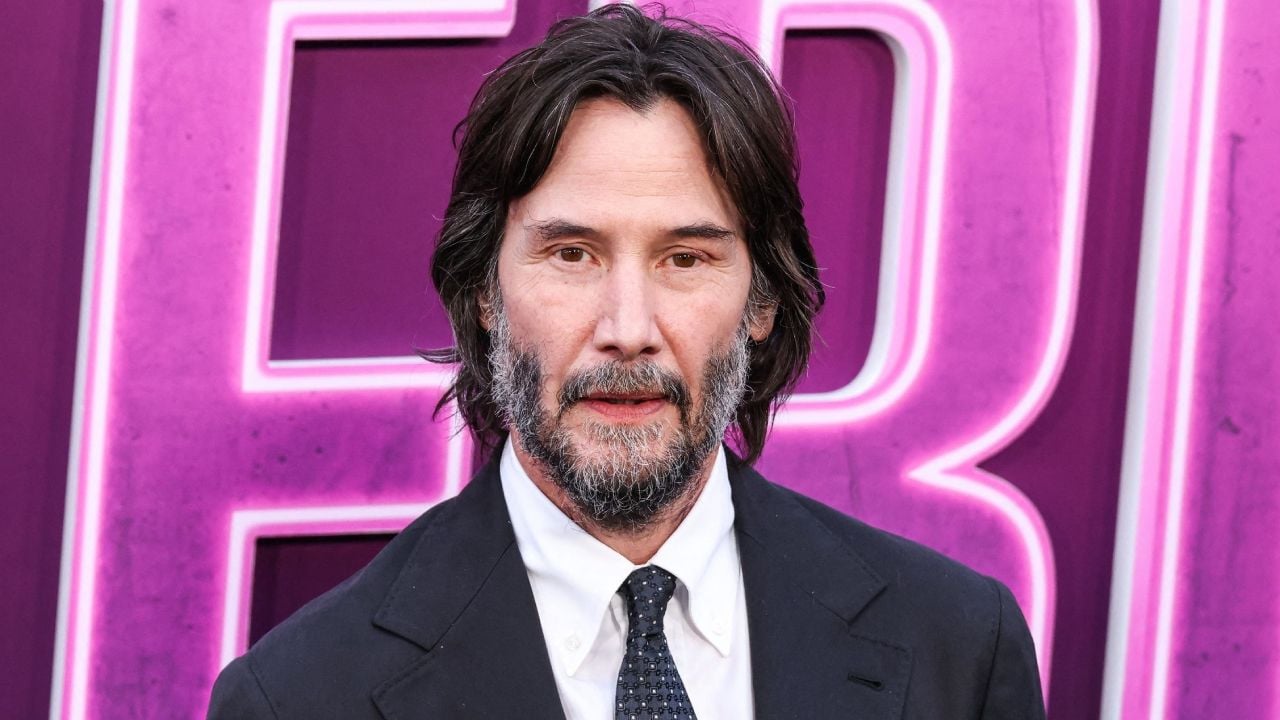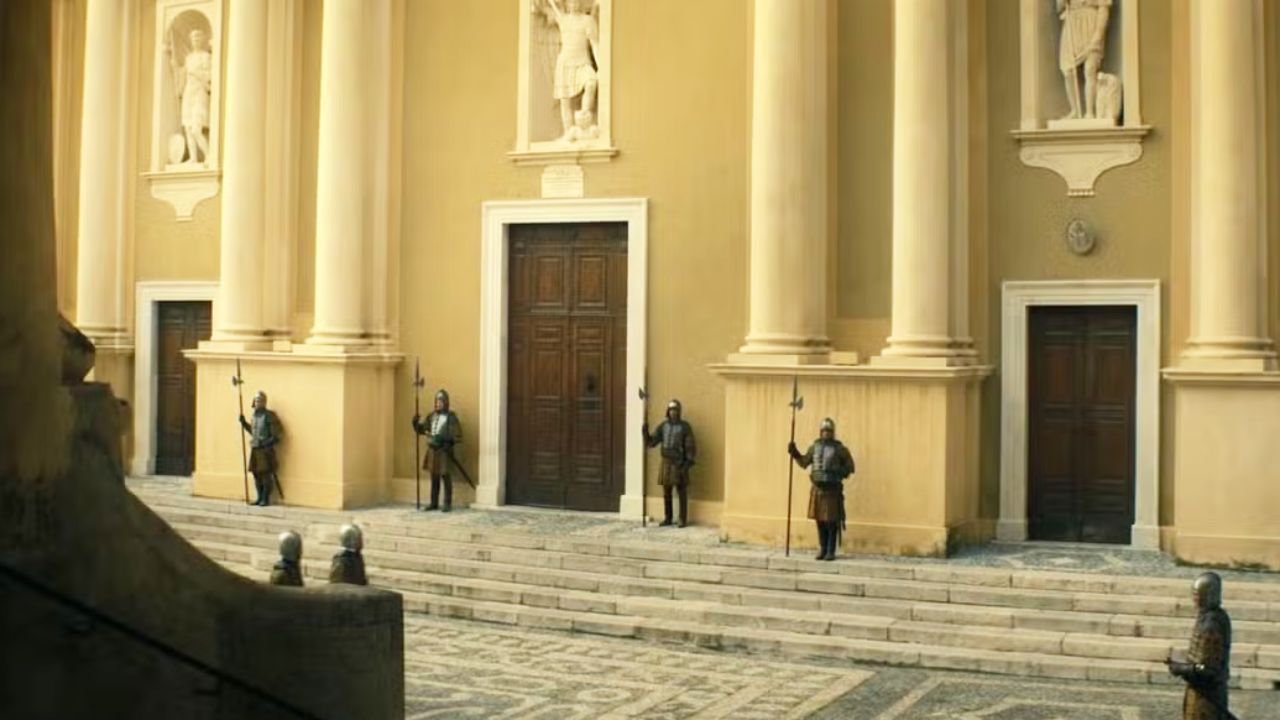Discover the history of Mangueira, the famous green and pink city and one of the most traditional and popular samba schools in Brazil
Summary
Estação Primeira de Mangueira was founded in 1928, in Terreiro de Tia Fé, located in Morro da Mangueira; Cartola, one of the best known and most admired Brazilian composers, played a fundamental role in the foundation of the school; Mangueira has been champion of the Rio Carnival 20 times since her first participation in 1932.
“Only those who are already dead will not go after the green-pink ones“. The words, coming from one of the most famous samba songs of the Estação Primeira de Mangueira, summarize well the relationship that the school has with the Brazilians.
Honored in the songs of artists such as Tom Jobim, Chico Buarque, Nelson Cavaquinho and even Paulinho da Viola, known for his love of Portela, another famous Rio Carnival group, Mangueira is one of the most traditional and popular samba schools in Brazil , which brings together admirers across the country with its green and pink.
Holder of 20 champion titles at the Rio de Janeiro Carnival, Mangueira is a samba school founded in 1928 and has achieved notable results in its 95 years: it was the first to create a composers’ wing and boasts the tradition of, since Since its foundation, they have had a unique sign on their drums, made by the deaf man, which is part of their symbol.
When was the Mangueira samba school founded?
The Mangueira samba school originated in Mangueira Hillwhich was later renamed the Mangueira neighborhood, located in the northern area of the city of Rio de Janeiro.
Cultural and religious events carried out by African populations were frequent in Morro da Mangueira, as it hosted numerous freed slaves and their descendants.
Some houses served as religious temples for candomblé ceremonies, as in the case of the Tia Fé terreiro – Benedita de Oliveira’s nickname – where, after the ceremonies, singing and drumming were also performed for the entertainment of the residents.
By the early 1920s, carnival groups had taken over the hill and one stood out: the Bloco dos Arengueiros, a carnival group made up of samba “rioters” from the region who became popular and were invited to participate in other blocs of Morro da Mangueira.
Heir to the carnival groups that had invaded the hill at the beginning of the decade, Mangueira was founded by participants of the Bloco dos Arengueiros who proposed the union of their block with other popular groups on the hill to form a single school.
This is how, in Terreiro de Tia Fé, on April 28, 1928, the Estação Primeira de Mangueira samba school was founded.
Who were the founders of the Mangueira samba school?
The list of Mangueira founders includes:
- Top hat;
- Carlos Cachaça;
- Ze Espinguela;
- Saturnino Gonçalves;
- Euclides Roberto dos Santos (Seu Euclides);
- Marcelino José Claudino (Maçu da Mangueira);
- Pedro Caino (Paquetá);
- Abelardo da Bolinha.
Cartola, the famous samba player, was responsible for naming the school and writing what would be considered its first samba. “Chega de Demanda” is a song in which Cartola calls for the union of all the blocks of Morro da Mangueira, in which he sings: “Enough with the question/Enough/With this team we must win/We are from Estação Primeira/ Hello or Morro of Mangueira”.
What color is the Mangueira samba school?
Mangueira is famous for being the school green and pink. The colors, as well as the name, were chosen by Cartola, in reference to the Rancho do Arrepiado de Laranjeiras.
As a symbol, Mangueira has the surdo – a type of drum used in his drumming – surrounded by laurel branches and crowned, in reference to the school considered the “queen of samba”.
The Mangueira flag has green and pink colors distributed over sixteen rays. The symbol of the school is in the center of the flag, above a green octagon, where 1928 is also written, the year the school was founded, and a banner is drawn with the official name of the association, GRES Estação Primeira de Mangueira.
The flag also has twenty golden stars embroidered, each representing a victory achieved by the school in Marquês de Sapucaí, one of which is larger than the others to represent the victory in the 1984 Carnival super championship.
Where is the Mangueira samba school?
The Estação Primeira de Mangueira is located in the Mangueira neighborhood, in Rio de Janeiro. Its first location was in Travessa Saião Lobato, at number 7, in Buraco Quente.
The court is currently located at Rua Visconde de Niterói, 1072, in Rio.
Who were the main samba singers in Mangueira?
The Mangueira samba school hosts great samba artists recognized throughout the country.
Among some of the main names are:
- Jamelao;
- Jurandir da Mangueira;
- Luizito;
- Rixxah;
- Zé Paulo Sierra;
- Ciganerei;
- Agnaldo Amaral;
- Marquinho Art’Samba.
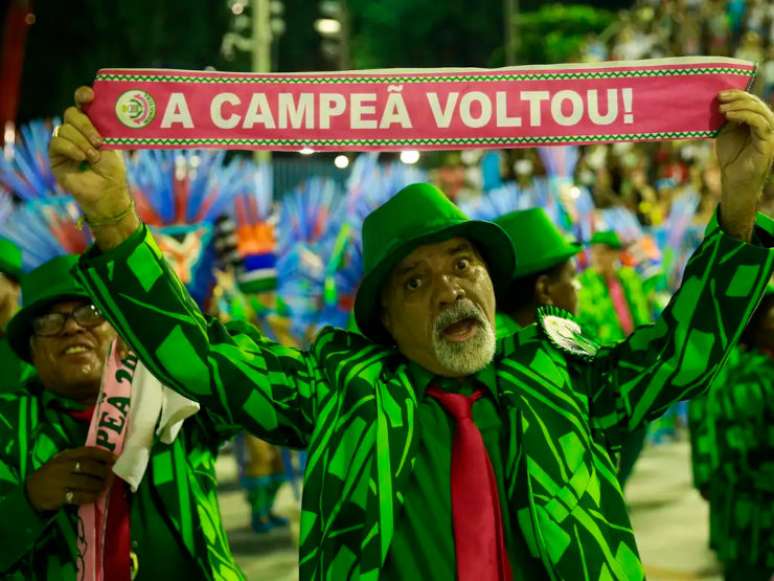
What were Mangueira’s titles?
During its 95 years of existence, Mangueira won 20 championship titles at the Rio Carnival.
Additionally, the school placed second in the Rio de Janeiro Carnival 19 times (1935, 1936, 1939, 1941, 1943, 1944, 1945, 1946, 1947, 1955, 1963, 1966, 1969, 1972, 1975, 1976, 1978 ), 1988 and 2003).
Among the greatest champions of the Rio de Janeiro Carnival, Mangueira is second only to Portela.
Title from 1932
In 1932, Mangueira was champion of the Rio Carnival with the samba plot “Sorrindo Ou Na Floresta”.
Title from 1933
In his second consecutive year winning the Rio Carnival Championship, Mangueira presented the samba plot “Uma Monfeira no Bonfim da Bahia”, with Pedro Palheta and Maçu da Mangueira as carnival performers.
Title from 1934
In 1934 Mangueira won the Rio Carnival with the samba plot “Divina dama – República da orgia”.
Title from 1940
The title of Carnival champion in 1940 was won with the samba plot “Crantos, pretos and Poets”. The carnival artist of the year was Mr. Armando, who had been responsible for the school’s parades since 1938.
Title from 1949
In 1949 Mangueira won the champion title with the samba-enredo “Apologia aos Mestres”, written by Alfredo Português and Nelson Sargento.
1950 title
In his second consecutive victory, Mangueira won the title with the samba plot “Plano SALTE – Saúde, agriculture, transport and education”, also written by Alfredo Português and Nelson Sargento.
Title from 1954
Composed of Cícero dos Santos and Pelado da Mangueira, the winning samba plot of the 1954 Carnival was “Rio de Janeiro of yesterday and today”.
Title from 1960
Written by Cícero dos Santos, Hélio Turco and Pelado, the samba plot “The Carnival of All Times” was the winner of the 1960 carnival. The parade was entrusted to the carnival artists Roberto Paulino and Darque Dias Moreira.
Title from 1961
1961 was another year of victory for a samba of Cícero dos Santos, Hélio Turco and Pelado and a parade created by Roberto Paulino and Darque Dias Moreira: “Reminiscências do Rio Antigo” gave the title of two-time champion to Mangueira.
1967 title
In 1967, the samba plot “The Enchanted World of Monteiro Lobato”, in homage to the famous author of O Sítio do Pica Pau Amarelo, gave the title to Mangueira. The music was composed by Batista da Mangueira, Darcy da Mangueira and Luiz, while the parade was entrusted to the carnival artist Júlio Mattos.
1968 title
“Samba, celebration of a people” was the champion samba plot of the 1968 Carnival. Composed of Batista da Mangueira, Darcy da Mangueira, Dico and Hélio Turco, the parade was created by Júlio Mattos.
1973 title
“Lendas do Abaeté”, written by Jajá, Manuel and Preto Rico, was the samba that gave Mangueira its title in the 1973 Carnival. Once again Julio Mattos was the artist of the carnival.
1984 title
In 1984, Mangueira was twice champion: with the samba song “Yes, Nós Tem Braguinha”, by Arroz, Comprido, Hélio Turco, Jajá and Jurandir, the samba school won the championship of group 1A and, subsequently, won the Superchampionship, organized to celebrate the inauguration of the Marquis of Sapucaí.
Max Lopes was the carnival worker in charge of the parade.
1986 title
The 1986 samba plot was a tribute to Dorival Caymmi: “Caymmi shows the world what Bahia and Mangueira have” was written by Ivo Meirelles, Lula and Paulinho. Júlio Mattos took charge of the show for the first time since 1979.
1987 title
In yet another second championship and yet another parade organized by Julio Mattos, Mangueira paid homage to Carlos Drummond de Andrade with the samba song “In the kingdom of words, Carlos Drummond de Andrade”, by Bira do Ponto, Rody and Verinha.
1998 title
In 1998, it was Chico Buarque’s turn to be honored: with a parade by Alexandre Louzada, the samba piece “Chico Buarque da Mangueira”, by Carlinhos das Camisas, Nelson Csipai, Nelson Dalla Rosa and Herivaldo Martins Vilas Boas, was was the champion of that year’s Carnival.
2002 title
In 2002, Max Lopes returned to be the artist of the Mangueira carnival and the samba plot “Brazil with a ‘Z’ is for the plague goat, Brazil with an ‘S’ is a Northeastern nation”, composed from Amendoim and Lequinho, he was the champion of the Rio Carnival.
Title 2016
Mangueira decided to pay homage to Maria Bethânia in 2016. In this way, the samba plot “Maria Bethânia: A Menina dos Oyá”, Alemão do Cavaco, Almyr, Cadu, Lacyr D Mangueira, Paulinho Bandolim and Renan Brandão, and with a The parade commanded by carnival artist Leandro Vieira won the 2016 Carnival in Rio de Janeiro.
Title of 2019
In 2019, Mangueira was champion of the Rio Carnival with “História para nanar gente grandes”, a samba composed of Deivid Domênio, Tomaz Miranda, Mama, Marcio Bola, Ronie Oliveira, Danilo Firmino, Manu da Cuíca and Luiz Carlos Máximo.
What is the plot of Mangueira’s samba in 2024?
In 2024, Mangueira will bring to Sapucaí the samba-enredo “A Negra Voz do Ajante”, composed of Lequinho, Junior Fionda, Gabriel Machado, Fadico, Guilherme Sá and Paulinho Bandolim. The carnival workers responsible for this year’s parade are Annik Salmon and Guilherme Estevão.
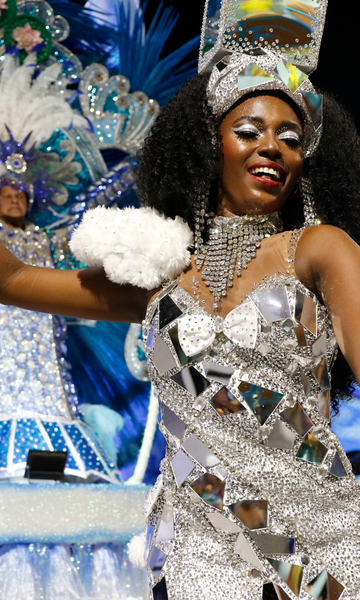
Find out who the greatest champions of the Rio de Janeiro Carnival are
Source: Terra
Rose James is a Gossipify movie and series reviewer known for her in-depth analysis and unique perspective on the latest releases. With a background in film studies, she provides engaging and informative reviews, and keeps readers up to date with industry trends and emerging talents.

